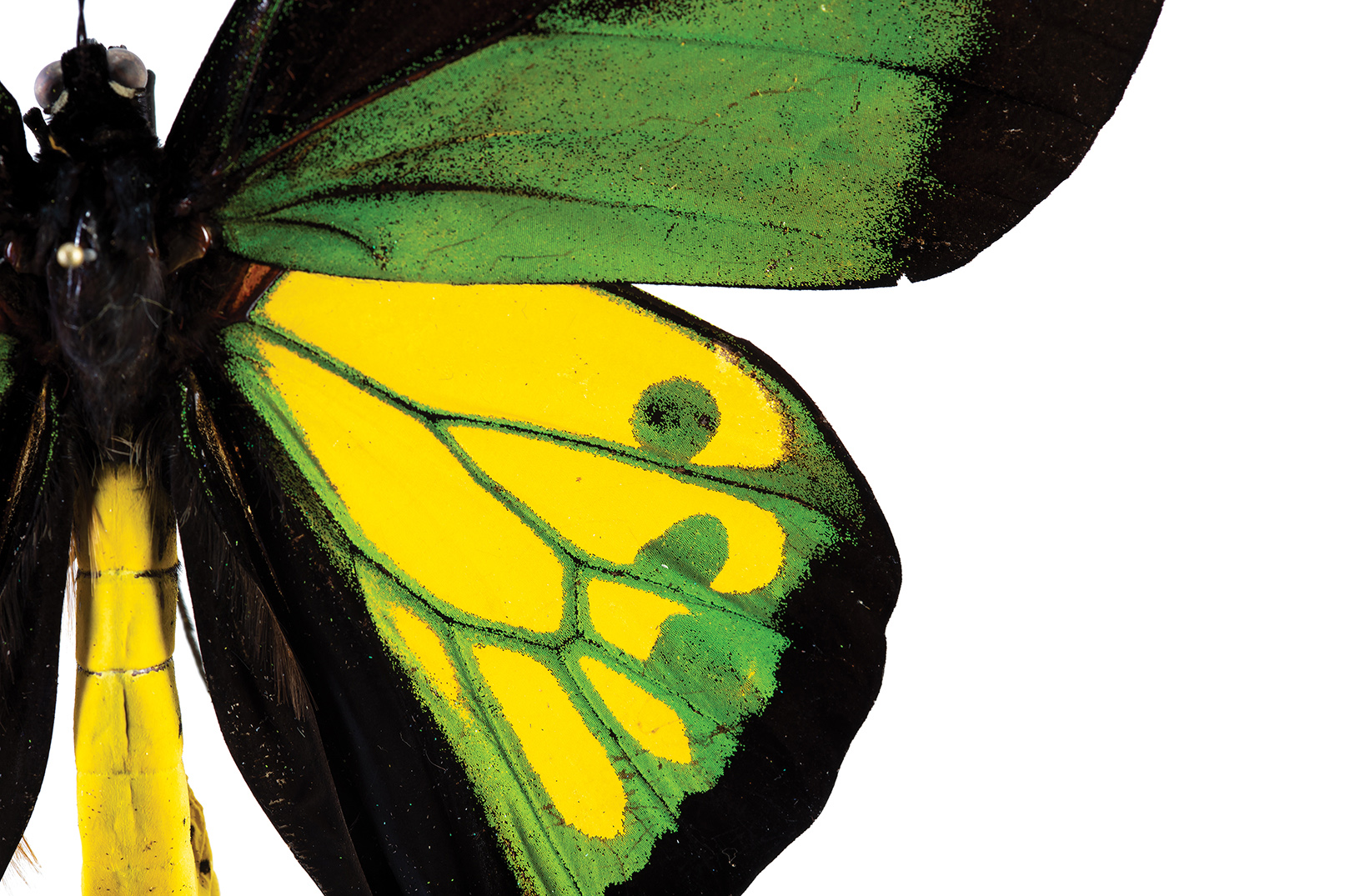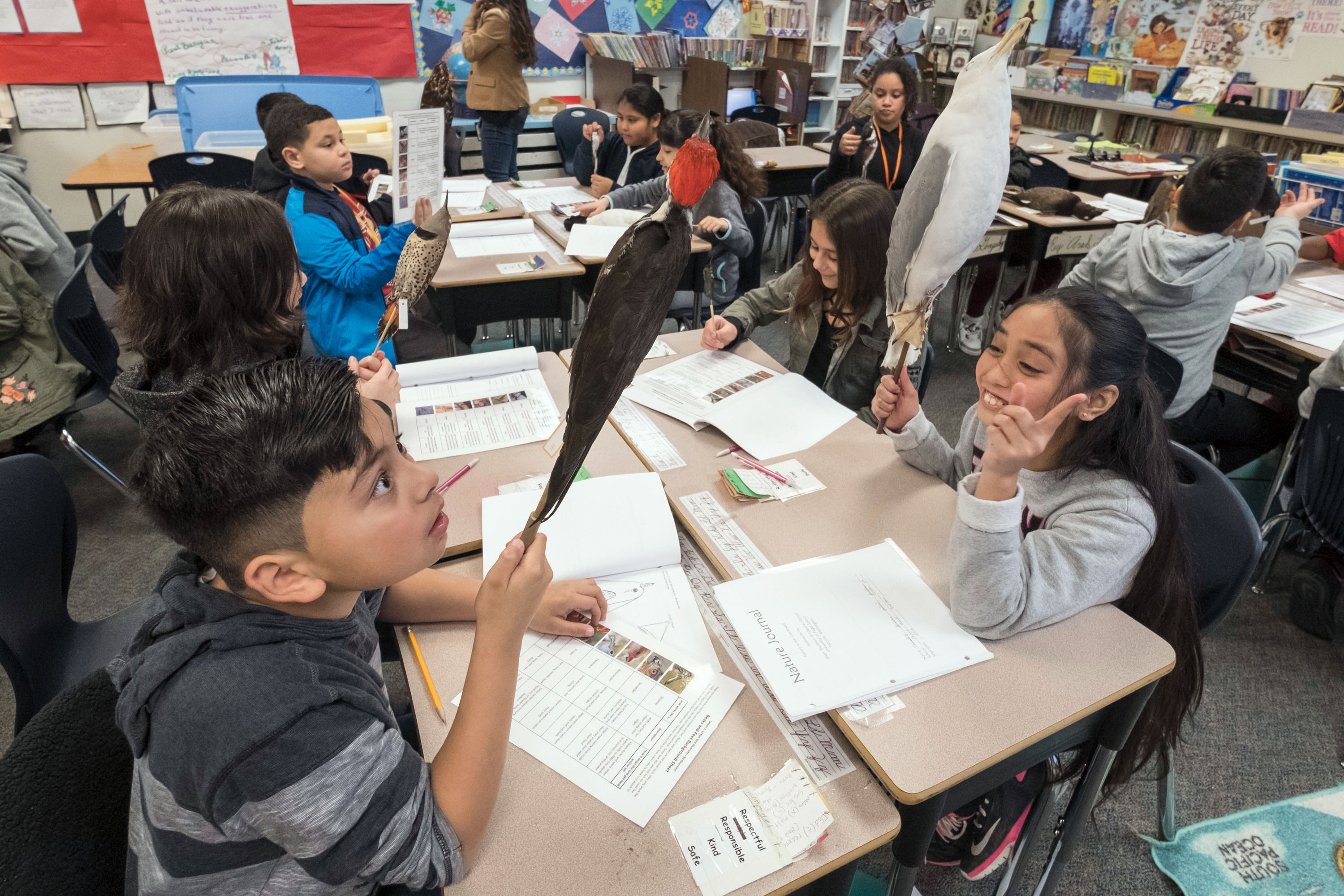Of all the specimens in Slater Museum of Natural History in Thompson Hall—birds, bird eggs, plants, skulls, skeletons—perhaps none is as strikingly colorful as the butterfly collection. We share a few of our favorites.
Campus, Arches
Our Favorite Butterflies

OLD WORLD SWALLOWTAIL, or Papilio machaon. This species has many subspecies, including one found in Washington state whose larvae feed on tarragon, carrot, and parsley.

RED-BODIED BATWING, or Atrophaneura semperi, from the Philippines. The red body and bright wings are a warning to predators: This butterfly is poisonous.

GIANT BLUE SWALLOWTAIL, or Papilio zalmoxis, from West Africa. Named for Zalmoxis, a divine being of the ancient people who lived along the Danube River.

CROWNED HAIRSTREAK, or Evenus coronata, from Southern Mexico to Ecuador. Don’t be fooled by the size of the photo: This butterfly is a mere 2 1/2 inches wide.

BRIMSTONE BUTTERFLY, or Hebomoia leucippe, from Indonesia. The butterfly on the cover of this issue. Some of its relatives in the family Pieridae are found in North America.

MADAGASCAN SUNSET MOTH, or Chrysiridia rhipheus, from Madagascar. The caterpillars of this species produce a silk that’s psychedelic if consumed by humans.

VARIABLE CATTLEHEART, or Parides erithalion, from Mexico to Argentina. The colors of this poisonous species ward off would-be predators, allowing it to sip nectar from flowers without being disturbed.

GREAT PURPLE EMPEROR, or Sasakia charonda, from Japan to Vietnam. This glorious species is the national butterfly of Japan. It’s also found in Korea, where its name translates to “king five-colored butterfly.”
1/8
Bonus: Behind the Shoot





1/5
Explore More Stories
Related Stories










